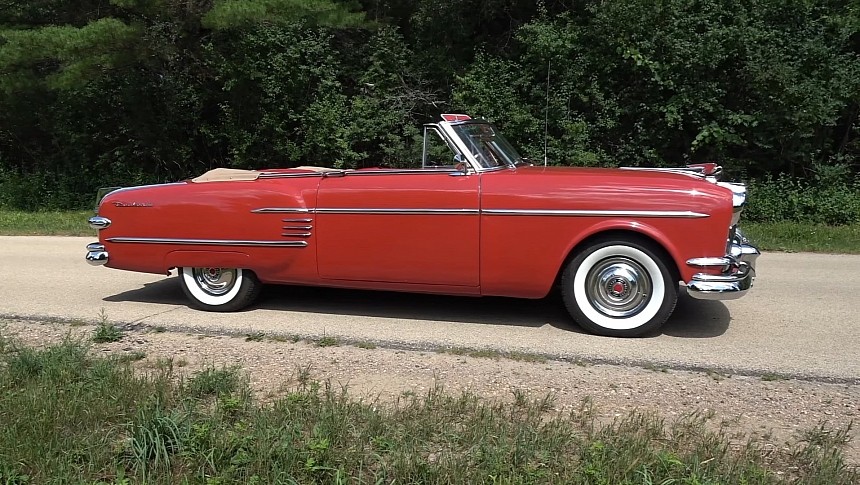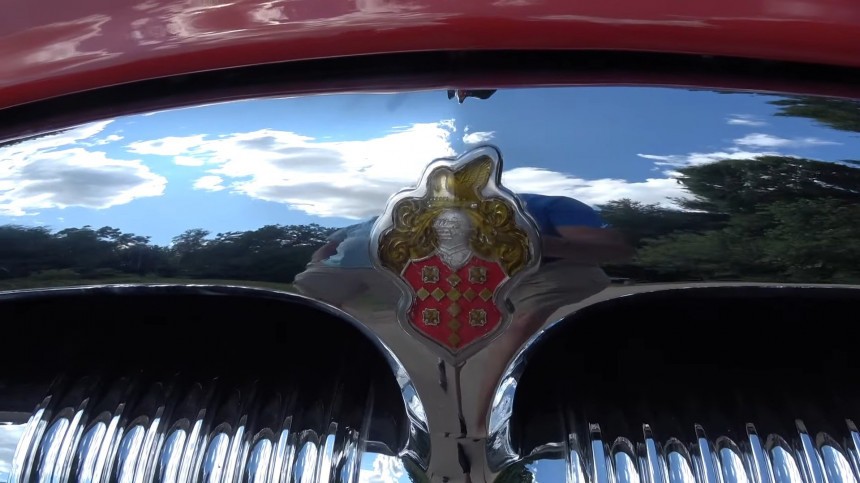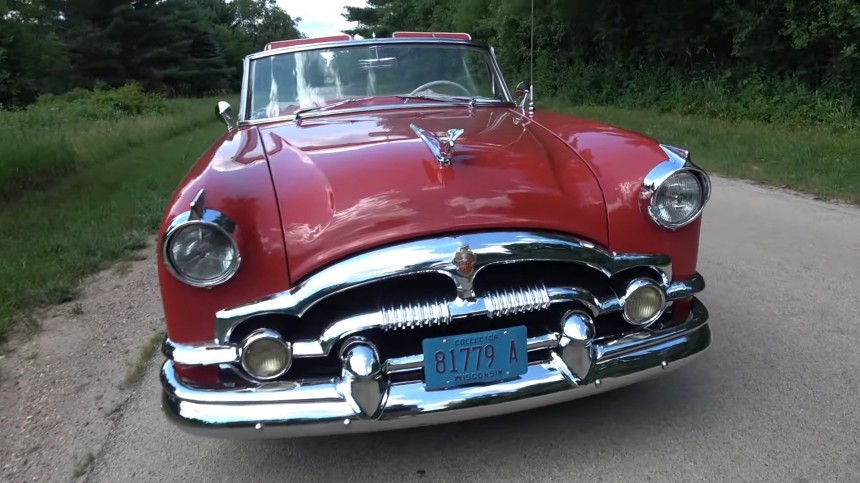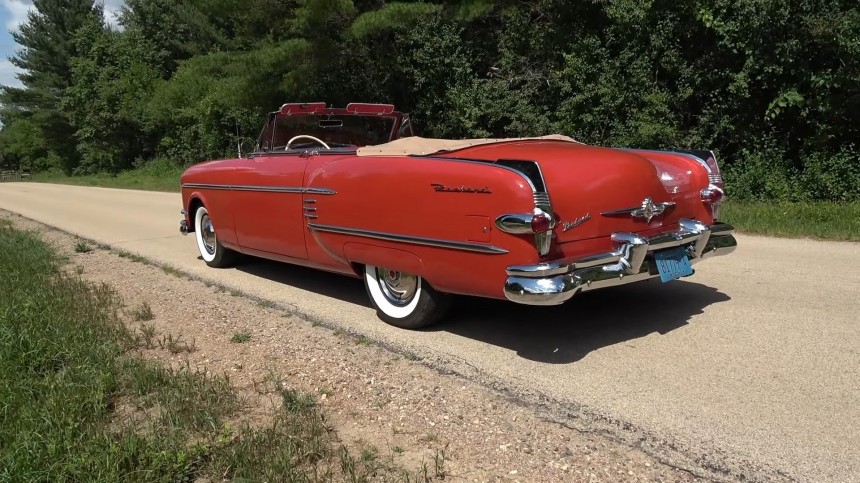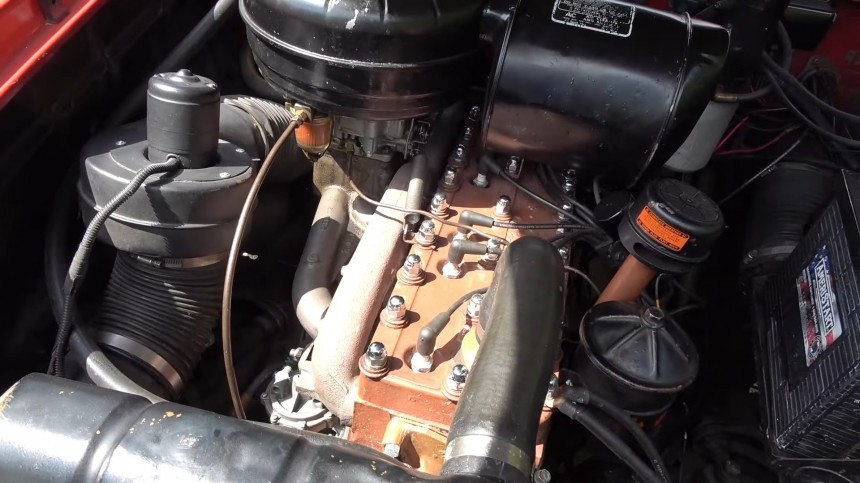World War II was – and still is – the single most devastating man-made event in the existence of humanity. But out of the ashes of atrocities and endless suffering rose some of the most outstanding achievements of Man. Space exploration took off where rocket bombs left off; aviation leaped forward at unprecedented speeds; the computer entered the stage – and broke the Nazi cyphering machine, the Enigma. And the American motoring industry stepped up as the driving force of the nation’s economic progress – but this high-gear jump fatally wounded a legendary name: Packard.
The Arsenal of Democracy was, ironically, built by forcing all American carmakers to shift production for the war effort in February 1942. Nonetheless, the conjured struggle of the motoring minds and arms decisively tilted the balance of power toward the Allies.
Two decades before Ford cracked the whip on its most iconic nameplate – that would be the Mustang – another wild stallion took the world by storm. However, this magnificent machine did not run but flew high in the skies. And it wreaked havoc in its path: the P-51 Mustang was undoubtedly the best fighter plane of the Second World War.
It entered service on the European front in December 1943 with the B and C variants, but the most emblematic was the P-51D – the ‘Bubble Top.’ From March 1944 until the surrender of Germany in May of the following year, the Mustangs claimed 4,950 enemy aircraft kills – more than any U.S. fighter in Europe.
One of the secrets of the mighty Mustang lay in its formidable engine, a Roll-Royce Merlin variant that had to undergo significant mechanical improvements. Leave it to Packard, the American luxury motoring staple, to develop an air ace, the V12 1650 aircraft engine. Over 50,000 units were assembled and powered several aircraft and marine warships.
That’s an undeniable testament to Packard's rigorous engineering standards that had made the brand famous for its high-end craftsmanship. But after the war, something happened – and it wasn’t a good change.
It took Packard six years to develop a new post-war car design; while the heavyweights from Detroit were rolling out new vehicles in the late forties, America’s oldest carmaker (at the time) completely missed the start. The company paid much attention to putting out a mid-price model and neglected their main customers from the luxury class.
This decision took a heavy toll on Packard’s fame, reputation, and trustworthiness – and when the company realized what had happened, its fate had been all but sealed. The fifties had no mercy for the historic brand that abandoned its Detroit East Grand Boulevard cradle in 1956, only to vanish two years later.
Packard was reluctant to sudden changes, confirmed by its attachment to a symbol of pre-war motoring, the straight-eight engine. Along with Pontiac, Packard was the last of the automobile companies to ditch the dated design in favor of the new wonder kid, the V8. That was in 1954 when the clouds of fate were already glooming over Detroit’s first carmaker (Packard broke ground for its assembly facilities in 1903).
One of the last eight-cylinder Packard dinosaurs still roams Planet Piston under the hood of this 1954 Packard Convertible. One of a batch of 863, the Convertible was one of the two drop-tops offered by the carmaker for 1954, from a line-up of seven models.
The car had the best engine available from Packard – the venerable but archaic straight-eight with 359 cubic inches (5.9 liters), 212 hp, and 330 lb-ft (215 PS / 447 Nm). The flathead inline-eight was a sturdy old-timer with nine main bearings for added strength and better vibration reduction. Look at it – it takes a lot of engine bay real estate to accommodate the long valve-in-block plant.
A compression ratio of 8.7:1 (the highest in any production car in the world at the time) was vital for the engine’s output, and its 4.5-inch stroke (114.3 mm) delivered the high peak torque at 2,200 RPM. It wasn’t a high-revving tiger but a composed, low-grunt grizzly bear.
The 359-cube S8 plant was new for the 1954 model year, and thanks to its over-square architecture and four-barrel carburetion, it offered heaps of low-speed torque, suitable for casual, carefree cruising. But it was on its way into history since more efficient V8s were already taking over (remember Chrysler’s first hemispherical-heads FirePower that came out in 1950?). The long piston travel and innate high-speed breathing difficulty – typical of valve-in-block designs – drew the demise of the aging L-head motors.
Packard still put up a fight in 1954, and this convertible is solid proof of that ailing last stand. The chrome exuberance, overconfident Dagmars, the signature double taillights, the swan ornament on the hood, and the intricate coat of arms emblem on the hood and trunk lid were all signs of a bygone era.
Still, the styling and build quality were tailored to Packard’s high standards from before the war, backed by ride quality, comfort, and high-end engineering. The owner of this stylish Convertible doesn’t tell if the car is a survivor or not – those shiny nuts on the heads are misleading – but an astute Packard connoisseur will reveal that there’s something not right with the engine.
The odometer read 86,997 miles (just shy of 140,000 metric clicks), so it falls right on the edge of the motor overhauling interval between 80,000 and 100,000 miles (roughly 130,000 to 160,000 km). However, a keen viewer of the video noticed this unit sounds like it has a miss at idle (with the most probable suspect being a sparkplug or its ignition wire).
The example featured in this video is the 67th Packard Convertible Coupe produced for the model year, so it didn’t get the Gear-Start Ultramatic two-speed automatic transmission (that was introduced later during production). However, this beautiful red Packer's owner highly praises the ride's smoothness. Power steering, power brakes, and a solid straight-eight – when adequately tuned, one could balance a nickel on it at idle – were crucial points of Packard’s sales literature in 1954.
The massive Packard is a rare appearance today – car show enthusiasts are more than thrilled to see it in metal – just as it was when it came out. With a very low production (863) and a steep retail price of $3,935 (roughly $41,500 in 2023 equivalent purchasing power), the Convertible Coupe was a rare bird even in its heyday.
Two decades before Ford cracked the whip on its most iconic nameplate – that would be the Mustang – another wild stallion took the world by storm. However, this magnificent machine did not run but flew high in the skies. And it wreaked havoc in its path: the P-51 Mustang was undoubtedly the best fighter plane of the Second World War.
It entered service on the European front in December 1943 with the B and C variants, but the most emblematic was the P-51D – the ‘Bubble Top.’ From March 1944 until the surrender of Germany in May of the following year, the Mustangs claimed 4,950 enemy aircraft kills – more than any U.S. fighter in Europe.
That’s an undeniable testament to Packard's rigorous engineering standards that had made the brand famous for its high-end craftsmanship. But after the war, something happened – and it wasn’t a good change.
It took Packard six years to develop a new post-war car design; while the heavyweights from Detroit were rolling out new vehicles in the late forties, America’s oldest carmaker (at the time) completely missed the start. The company paid much attention to putting out a mid-price model and neglected their main customers from the luxury class.
Packard was reluctant to sudden changes, confirmed by its attachment to a symbol of pre-war motoring, the straight-eight engine. Along with Pontiac, Packard was the last of the automobile companies to ditch the dated design in favor of the new wonder kid, the V8. That was in 1954 when the clouds of fate were already glooming over Detroit’s first carmaker (Packard broke ground for its assembly facilities in 1903).
One of the last eight-cylinder Packard dinosaurs still roams Planet Piston under the hood of this 1954 Packard Convertible. One of a batch of 863, the Convertible was one of the two drop-tops offered by the carmaker for 1954, from a line-up of seven models.
A compression ratio of 8.7:1 (the highest in any production car in the world at the time) was vital for the engine’s output, and its 4.5-inch stroke (114.3 mm) delivered the high peak torque at 2,200 RPM. It wasn’t a high-revving tiger but a composed, low-grunt grizzly bear.
The 359-cube S8 plant was new for the 1954 model year, and thanks to its over-square architecture and four-barrel carburetion, it offered heaps of low-speed torque, suitable for casual, carefree cruising. But it was on its way into history since more efficient V8s were already taking over (remember Chrysler’s first hemispherical-heads FirePower that came out in 1950?). The long piston travel and innate high-speed breathing difficulty – typical of valve-in-block designs – drew the demise of the aging L-head motors.
Still, the styling and build quality were tailored to Packard’s high standards from before the war, backed by ride quality, comfort, and high-end engineering. The owner of this stylish Convertible doesn’t tell if the car is a survivor or not – those shiny nuts on the heads are misleading – but an astute Packard connoisseur will reveal that there’s something not right with the engine.
The odometer read 86,997 miles (just shy of 140,000 metric clicks), so it falls right on the edge of the motor overhauling interval between 80,000 and 100,000 miles (roughly 130,000 to 160,000 km). However, a keen viewer of the video noticed this unit sounds like it has a miss at idle (with the most probable suspect being a sparkplug or its ignition wire).
The massive Packard is a rare appearance today – car show enthusiasts are more than thrilled to see it in metal – just as it was when it came out. With a very low production (863) and a steep retail price of $3,935 (roughly $41,500 in 2023 equivalent purchasing power), the Convertible Coupe was a rare bird even in its heyday.
